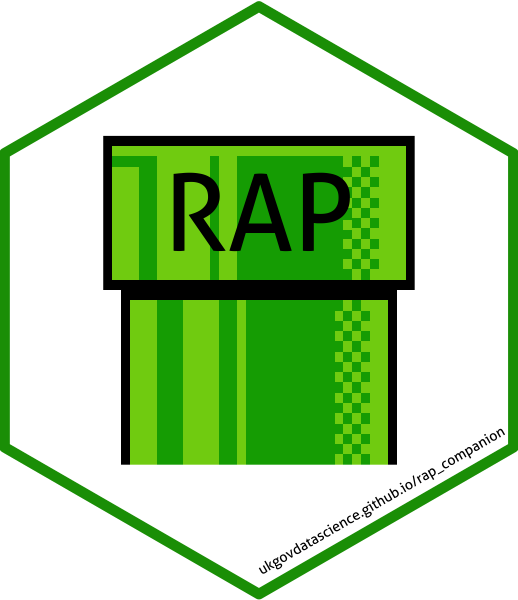RAP Companion
Matthew Gregory, Matthew Upson
2019-03-01
Preface
Producing official statistics for publications is a key function of many teams across Government. It’s a time consuming and meticulous process to ensure that statistics are accurate and timely. With open source software becoming more widely used, there’s now a range of tools and techniques that can be used to reduce production time, whilst maintaining and even improving the quality of the publications. This book is about these techniques: what they are, and how we can use them.
0.1 Discovery
Something is better than nothing.
This is NOT TRUE in the agile world; consider the opportunity cost1.
Prior to commiting to RAP development in your team ask yourself two questions:
- Is there a genuine user need for this new product/service?
- Does another product/service exist that you can re-use or adapt?2
0.2 Getting the balance right
Whilst incredibly powerful, these approaches should not be seen as panacea for all the difficulties of statistics production: however, implementing even a few of these techniques can drive benefits in auditability, speed, quality, and knowledge transfer.
There is a balance to be struck between ease of maintenance and the level of automation: this is likely to differ for every publication or team. These techniques are however tried and tested for software development and most already feature in the Service Manual: in this project we have just applied these methodologies to a new area.
0.3 Inspiration
This book was inspired by, and draws heavily from a Government Digital Service blog post by Dr. Matthew Upson, itself taking much inspiration from the fields of DevOps and reproducible research.
the loss of other alternatives when one alternative is chosen↩
There’s probably some code you can adapt on Github, such as the eesectors pacakge↩

